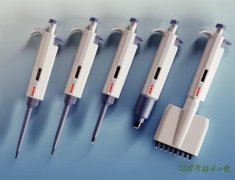Replacing the -OH group using phosphorus(V) chloride, PCl5
Phosphorus(V) chloride is a solid which reacts with carboxylic acids in the cold to give steamy acidic fumes of hydrogen chloride. It leaves a liquid mixture of the acyl chloride and a phosphorus compound, phosphorus trichloride oxide (phosphorus oxychloride) - POCl3.
The acyl chloride can be separated by fractional distillation.
For example:
![]()
![]()
Replacing the -OH group using phosphorus(III) chloride, PCl3
Phosphorus(III) chloride is a liquid at room temperature. Its reaction with a carboxylic acid is less dramatic than that of phosphorus(V) chloride because there is no hydrogen chloride produced.
You end up with a mixture of the acyl chloride and phosphoric(III) acid (old names: phosphorous acid or orthophosphorous acid), H3PO3.
For example:
![]()
![]()
Again, the ethanoyl chloride can be separated by fractional distillation.
Replacing the -OH group using sulphur dichloride oxide (thionyl chloride)
Sulphur dichloride oxide (thionyl chloride) is a liquid at room temperature and has the formula SOCl2.
Traditionally, the formula is written as shown, despite the fact that the modern name writes the chlorine before the oxygen (alphabetical order).
The sulphur dichloride oxide reacts with carboxylic acids to produce an acyl chloride, and sulphur dioxide and hydrogen chloride gases are given off.
For example:
![]()
![]()
The separation is simplified to an extent because the by-products are both gases. You would obviously still have to fractionally distil the mixture to separate the acyl chloride from any excess acid or sulphur dichloride oxide.

Two-dimensional thin-layer chromatography in the analysis of secondary plant metabolites ukas z Ciela , Monika Waksmundzka-H ajnos , Drugs, derived from medicinal plants, have been ...

量程的调节 调节量程时,如果要从大体积调为小体积,则按照正常的调节方法,逆时针旋转旋钮即可;但如果要从小体积调为大体积时,则...
1 什么是扫描电子显微镜(SEM) Scanning Electron Microscope(SEM)扫描型电子显微镜是由真空系统、 高压电源、高灵敏度增幅器获取样品表面图像的...

环己烷(CYH)、环己酮(CYC)、二丙酮醇(DAA)、四氢呋喃(THF)、二甲基甲酰胺(DMF)、二甲亚砜(DMSO)、甲基丙烯酸甲酯(MMA). (A)酯类 ESTERS 乙酸甲酯 MA...